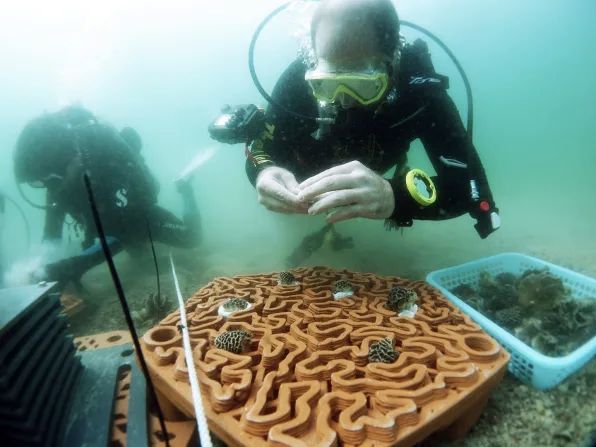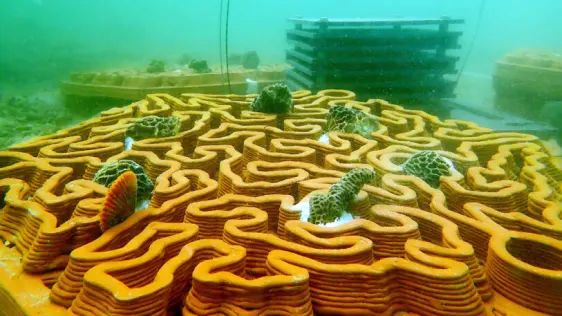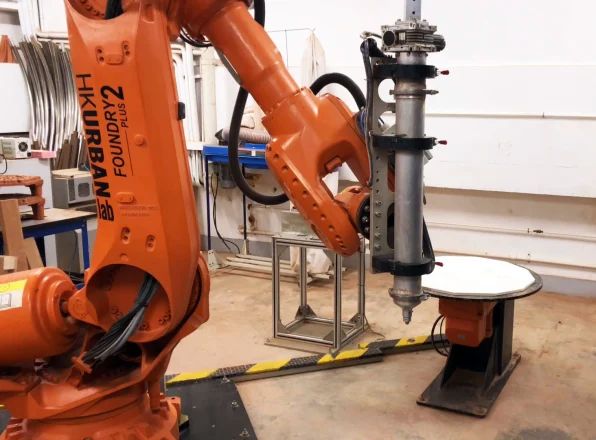
I’m reading a story on FastCompany about a 3D printed reef project, and wondering if this was the correct solution.
The project involved researchers from the University of Hong Kong, who wish to revive some of the coral reefs in that region. In recent years a variety of factors have contributed to the loss of coral habitats, including a red tide, pollution, and of course warming waters due to climate change.
One way to help mitigate at least some of these effects is to use artificial reefs. These are submerged artificial structures on which coral, which are actually small animals, may make their home and grow into the same type of corals we see today. The structures provide a kind of scaffold on which the corals can thrive.
When corals return, then an entire ecosystem usually follows, as the coral seem to be one of the base building blocks for healthy marine environments.
The project created several forms of bricks made from 3D printed terra cotta material. These were fired in a furnace to solidify them, and then assembled on site to provide the artificial reef structure.

The design of the bricks includes some interesting patterns, as well as interlocking features that allow the blocks to be assembled underwater into useful shapes. Apparently the patterns are used for different “functions”, and perhaps a marine scientist could describe them.

The team used a robotic system to extrude the terra cotta material, which they say is more environmentally sound than alternative materials such as metal or concrete. They say this is a more efficient method to produce the 600mm tiles in large quantities.
I’m a bit skeptical at this point. Is it really more efficient to produce a clay tile using an expensive robotic system that extrudes every cubic millimeter of the object? And then fire each tile at 2057F? That doesn’t seem very efficient to me; 3D printing is not a fast way to produce anything.
As to whether a better method might have been to simply use a molding process, team leader Christian Lange said:
“Though these tiles could be produced with other methods, such as making a double-sided mold, it would be quite complex to do since the design of the tile is very three-dimensional. 3D printing offers the advantage to produce objects and parts much more cost-effectively. But the most powerful advantage of it is that it could print each object with a different design without increasing the cost.”
Molding tiles is clearly a far faster and less expensive method than using a very expensive robotic system to print out only a few tiles per day, so I am not sure how this is true. Yes, a 3D tile might be producible only on a 3D printer and more difficult to do with a mold.
However, if that was the case, why wouldn’t you redesign the tile so that it could both be molded and also be used to fit together into 3D shapes? That’s done constantly with laser-cut items, so why not with tiles?
I have extreme doubt that this is a commercially viable alternative, and this work is more likely an experiment into the patterns on the tiles and their functionalities.
The moral of the story here is that 3D printing is not necessarily the best approach for solving a problem. It could be, but never count out other methods, even if they are thousands of years old. New is not necessarily better, and each situation must be evaluated on its own.
Always pick the right tool for the job.
Via FastCompany
